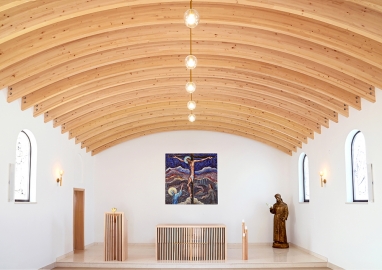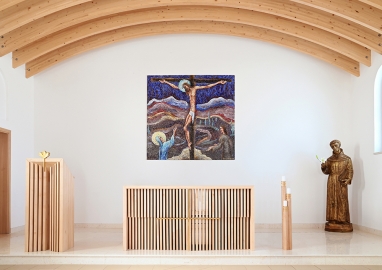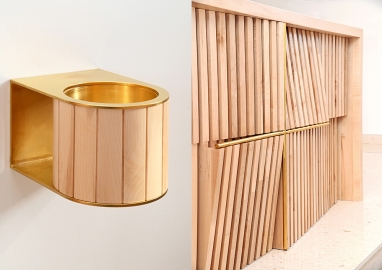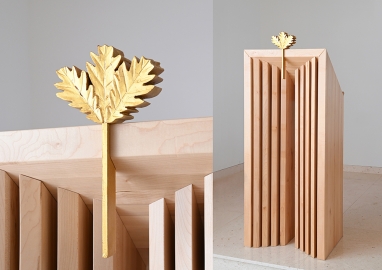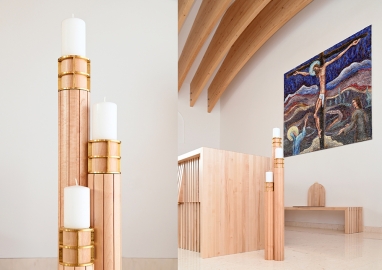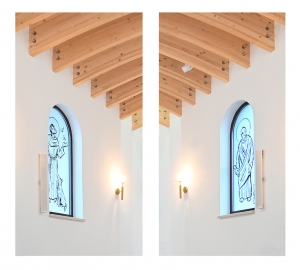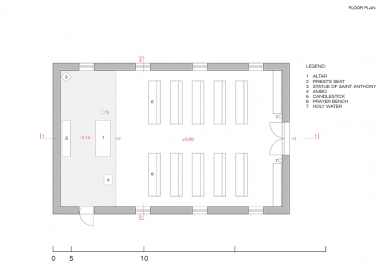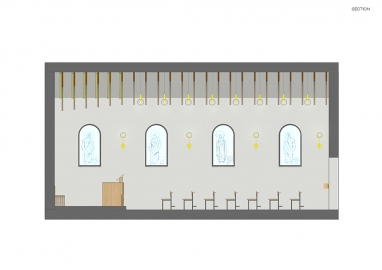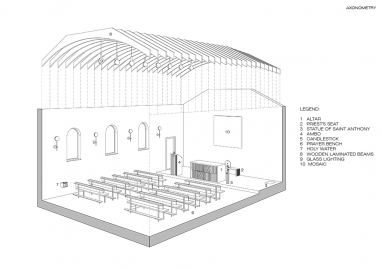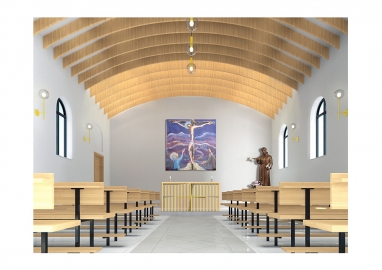The Pidris Chapel interior
The Pidriš Chapel is an interior design project in a small village near Uskoplje in the central part of Bosnia and Herzegovina. The space has been renovated and restored to the dignity that befits a sacred building. For a small community like Pidriš, this project was a great success and a tangible proof that strength truly resides in unity and collaboration.
The Pidriš Chapel, situated in the village of Pidriš within the Parish of the Assumption of the Blessed Virgin Mary - Uskoplje, was built in 1972. Serving as the only place of worship in a village of just 50 inhabitants, it holds a symbolic significance as the second home for the local community. It is a place for social and spiritual encounters, where past and the present coexist.
For years, the Chapel was in poor condition, waiting to be renovated. With the participation of the entire community, the plans were set to motion in mid-2021. One year later, the interior project was completed, and blessed on Saint Anthony of Padua day, in June 2022. The space consists of a prayer area and a presbytery with standard church elements and everything had to be designed respecting the atmosphere of the sacred space.
Sacred spaces always seek to embody ideas and meanings through form and atmosphere, slowly introducing us to a new world – the world of meditation and spirituality. In this Chapel, the transition between the profane and the sacral is mediated by the wooden beams on the ceiling, reminiscent of a barrel vault – an indispensable element that evokes memories of a traditional sacral architecture. The separation of the spiritual from the profane is created by subtle lowering the beams above the presbytery, which, together with the lighting hidden behind it, emphasize it more than the rest of the space.
The individual church elements complement the repetitiveness of the wooden beams, bringing harmony and balancing the space through details. Symbols of the cross on the altar, open books on the ambo, cyclicity on the candlestick and holy water, are achieved with the geometric manipulation of surfaces, accurately and consistently.
The artwork in the chapel is inseparable from the architectural expression; together they form a unique spatial-artistic syntagm, and, standing out from the everyday, this creates a specific atmosphere where the sacred and permanent meet.
The focus of the project was on interior interventions, preserving the Chapel's original structure. The ceiling beams have been positioned beneath the existing roof framework and do not serve as load-bearing elements of the building.
The interior is marked by the duality of its materials. All church equipment is designed in wood with golden details – modest, yet radiant. Apart from representing the connection to the local culture, wood evokes the wooden cross of Jesus's crucifixion. Gold, on the other hand, signifies endurance, nobility, transcendence and transformation, thus, underscoring the significance of faith.
Seven stain glass windows are embellished with biblical symbols in the artistic expression of the Academic painter Đuro Seder. A mosaic portraying the crucifixion of the Christ, by artist Blaženka Salavarda, takes the central position behind the altar. Finally, the golden detail on the ambo was created by the Academic sculptor Mile Blažević.

